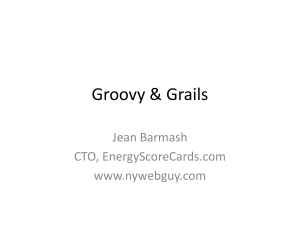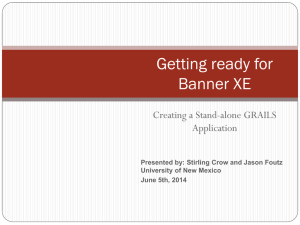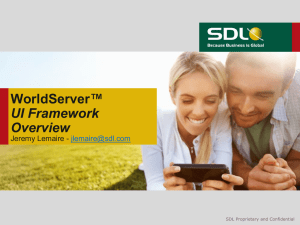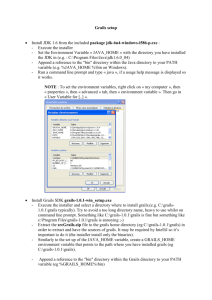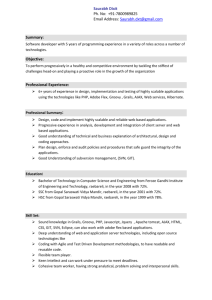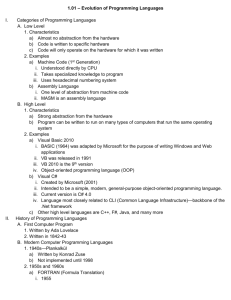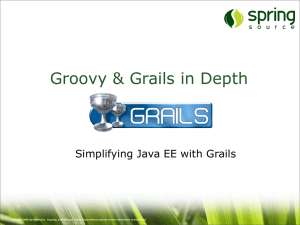SUCCESSFUL PRODUCT DEVELOPMENT WITH GRAILS AND
advertisement
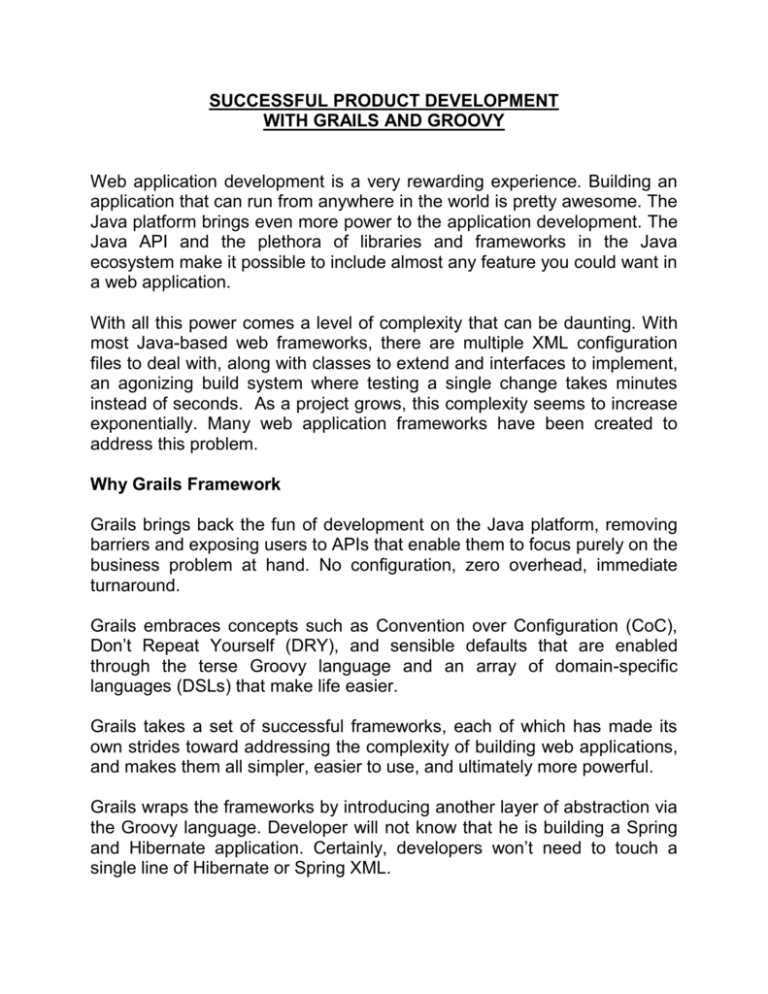
SUCCESSFUL PRODUCT DEVELOPMENT WITH GRAILS AND GROOVY Web application development is a very rewarding experience. Building an application that can run from anywhere in the world is pretty awesome. The Java platform brings even more power to the application development. The Java API and the plethora of libraries and frameworks in the Java ecosystem make it possible to include almost any feature you could want in a web application. With all this power comes a level of complexity that can be daunting. With most Java-based web frameworks, there are multiple XML configuration files to deal with, along with classes to extend and interfaces to implement, an agonizing build system where testing a single change takes minutes instead of seconds. As a project grows, this complexity seems to increase exponentially. Many web application frameworks have been created to address this problem. Why Grails Framework Grails brings back the fun of development on the Java platform, removing barriers and exposing users to APIs that enable them to focus purely on the business problem at hand. No configuration, zero overhead, immediate turnaround. Grails embraces concepts such as Convention over Configuration (CoC), Don’t Repeat Yourself (DRY), and sensible defaults that are enabled through the terse Groovy language and an array of domain-specific languages (DSLs) that make life easier. Grails takes a set of successful frameworks, each of which has made its own strides toward addressing the complexity of building web applications, and makes them all simpler, easier to use, and ultimately more powerful. Grails wraps the frameworks by introducing another layer of abstraction via the Groovy language. Developer will not know that he is building a Spring and Hibernate application. Certainly, developers won’t need to touch a single line of Hibernate or Spring XML. Grails Stack Hibernate: The de facto standard for object-relational mapping (ORM) in the Java world. Spring: The hugely popular open source Inversion of Control (IoC) container and wrapper framework for Java. SiteMesh: A robust and stable layout-rendering framework. Tomcat: A proven, embeddable servlet container. H2: A pure Java Relational Database Management System (RDBMS) implementation. ORM map objects from the object-oriented world onto tables in a relational database. ORM provides an additional abstraction above SQL, allowing developers to think about their domain model instead of getting wrapped up in reams of SQL. IoC provides a way of “wiring” together objects so that their dependencies are available at runtime. As an example, an object that performs persistence might require access to a data source. IoC relieves the developer of the responsibility of obtaining a reference to the data source. Grails is a fully compliant JavaEE framework. It would produce a standard .war file, which could be deployed on our commercial JavaEE application server. Developers can extend the functionality of Grails with numerous plugins, and easily dip into the underlying technologies to achieve what is needed.
